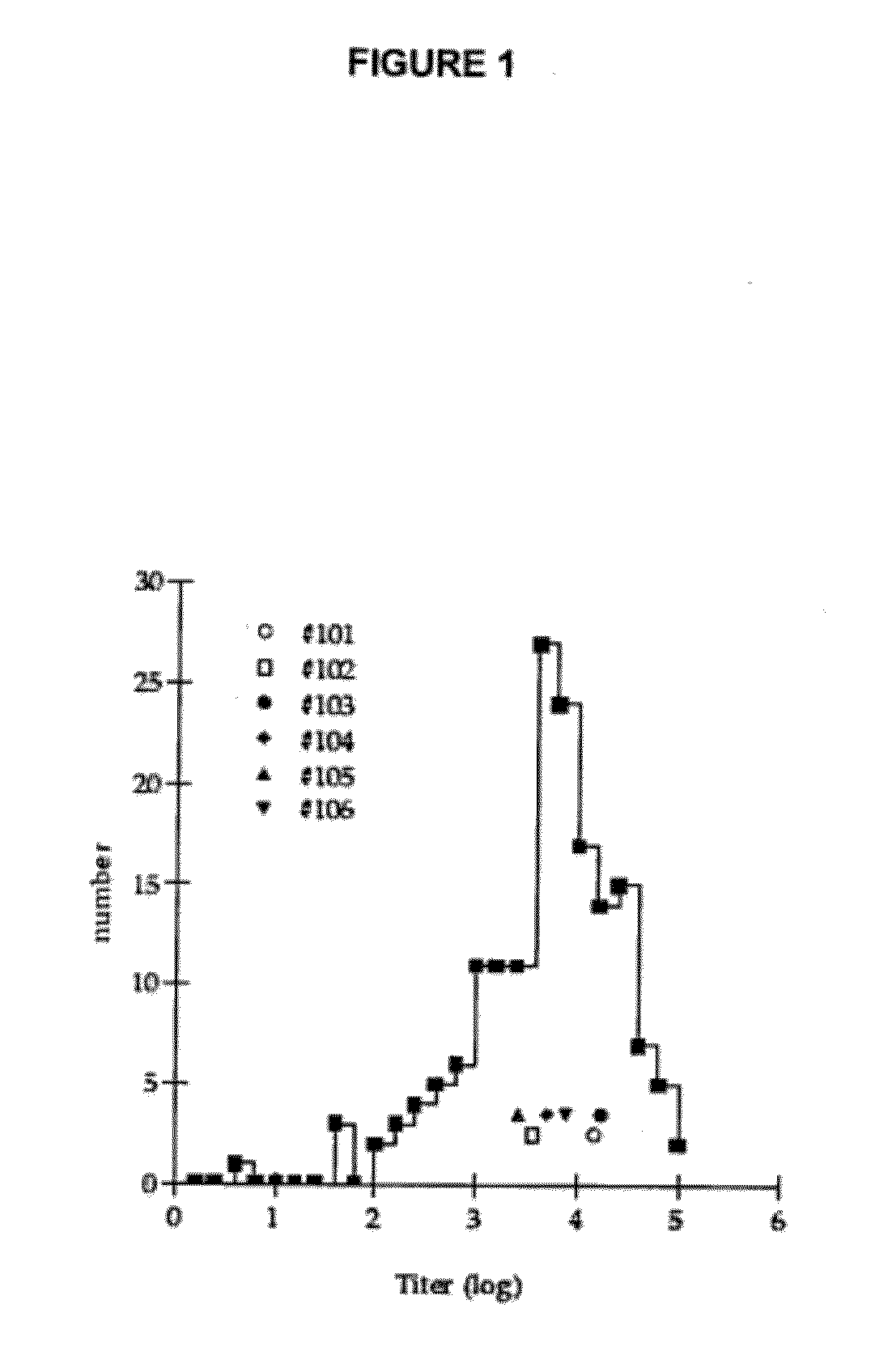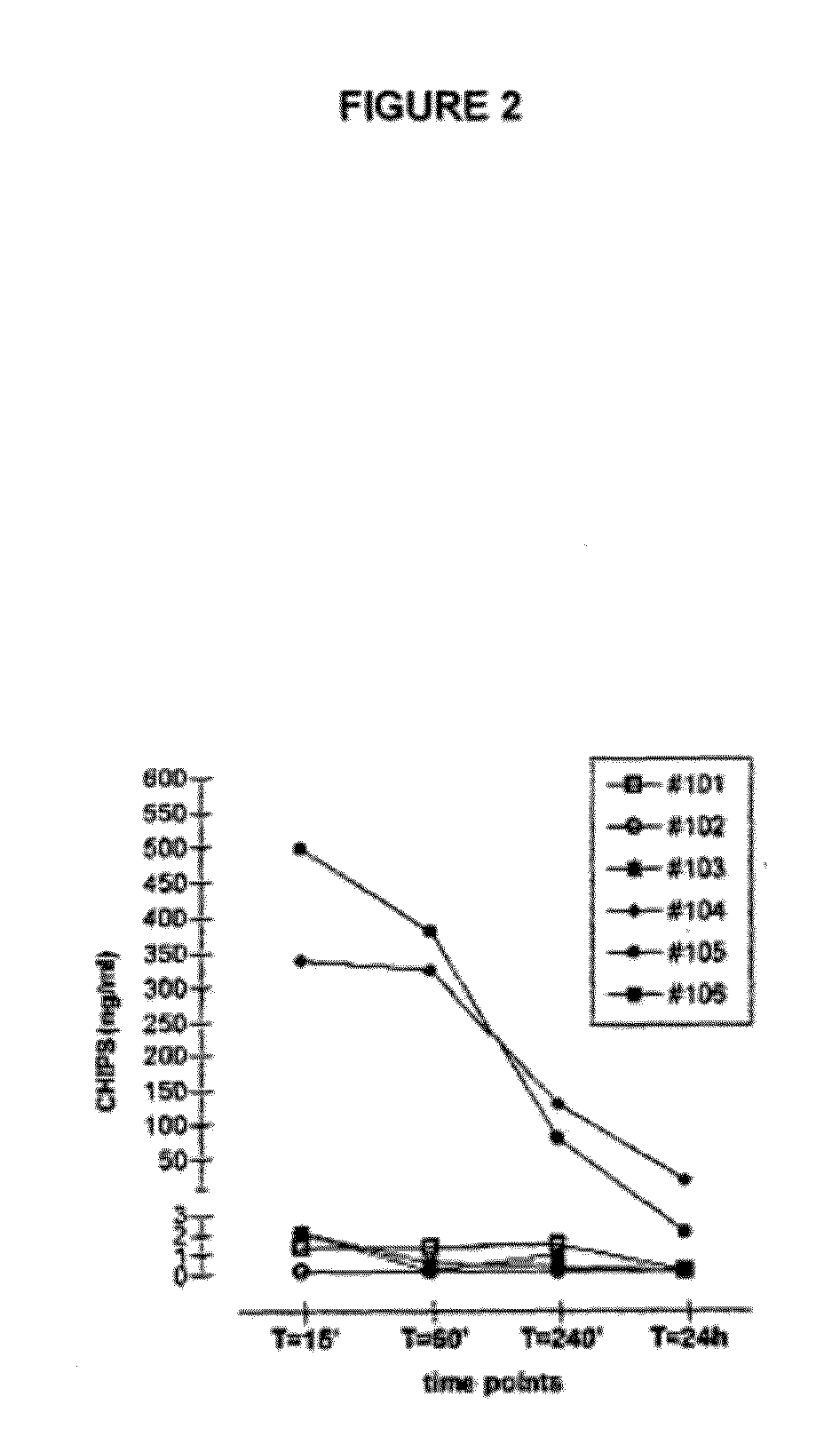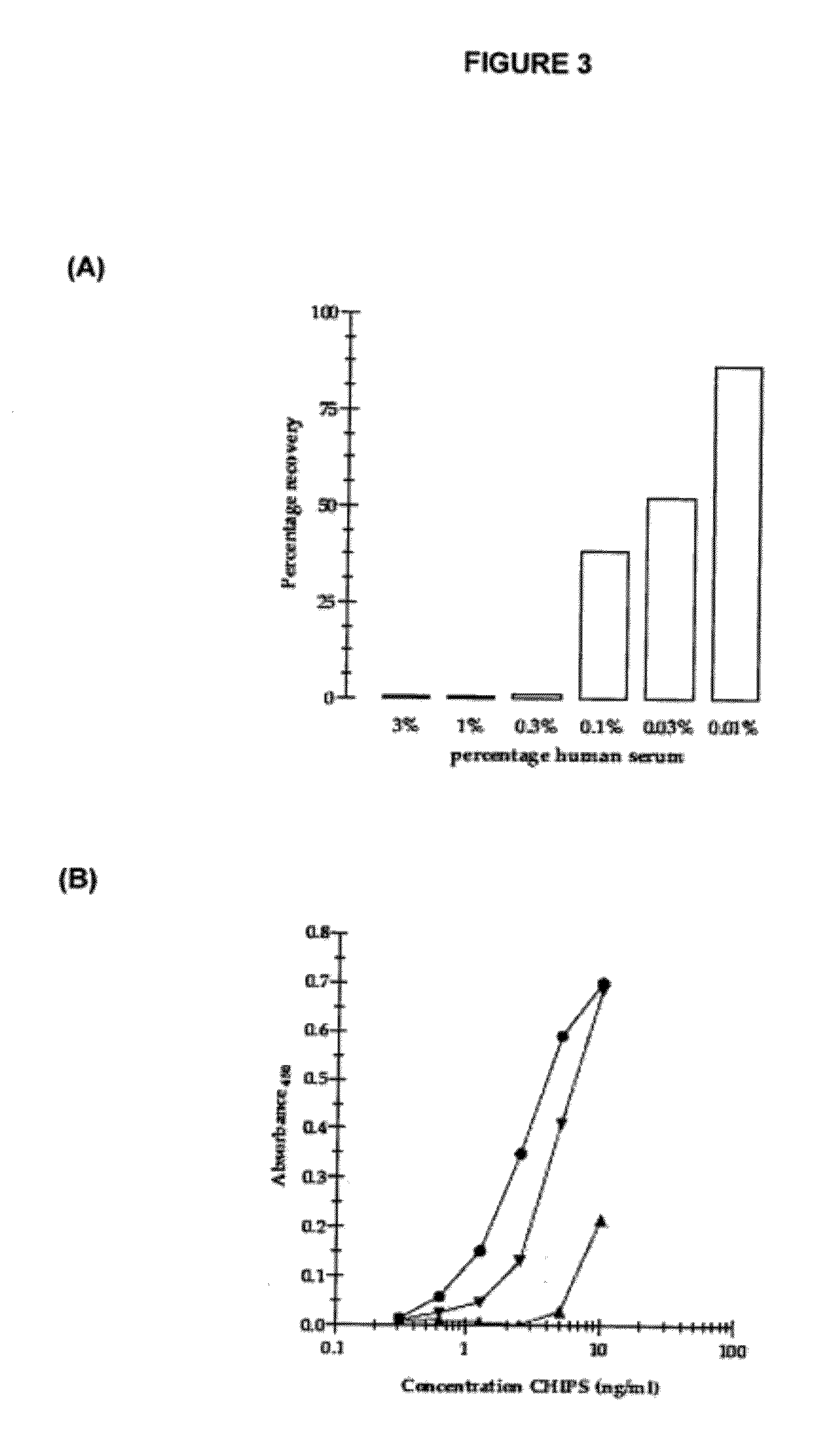Novel polypeptides and use thereof
- Summary
- Abstract
- Description
- Claims
- Application Information
AI Technical Summary
Benefits of technology
Problems solved by technology
Method used
Image
Examples
example b
Directed Evolution of CHIPS to Generate Functional Variants with Reduced Interaction with Human Antibodies
Abstract
[0227]Chemotaxis Inhibitory Protein of Staphylococcus aureus (CHIPS) is a protein that binds and blocks the C5a receptor (C5aR) and formylated peptide receptor, thereby inhibiting the immune cell recruitment associated with inflammation. If CHIPS was less reactive with existing human antibodies, it would be useful as an anti-inflammatory drug. Therefore, we applied directed evolution and computational / rational design to the CHIPS gene in order to generate new CHIPS variants displaying lower interaction with human IgG, yet retaining biological function. The optimization was performed in four rounds; one round of random mutagenesis to add diversity into the CHIPS gene and three rounds of DNA recombination by Fragment INduced Diversity (FIND®). Every round was screened by phage selection and / or ELISA for decreased interaction with human IgG and retained C5aR binding. The me...
example c
CHIPS Variant ADC-1004 is a Potent C5AR Antagonist Displaying Low Interaction with IgG from Human Serum
[0319]CHIPS is encountered by a majority of the human population early in life since Staphylococcus aureus is a common bacterium and the CHIPS gene is present in over 60% of S. aureus strains. Consequently, circulating anti-CHIPS antibodies that interfere with CHIPS binding to the C5aR have been detected in human serum (Wright et al., 2007, Mol Immunol 44:2507). Circulating antibodies may neutralize the biological effect of proteins. Such neutralizing antibodies may affect the efficacy of drugs, like the presence of anti-IFN-β antibodies in MS patients (Bertolotto et al., 2000, Immunopharmacology 48:95). Furthermore, circulating specific antibodies may form immune complexes (ICs) with the protein. Immune complexes are known to cause disease if deposited in blood vessels or organs, e.g. the kidney. In addition, IC mediated activation of the classical complement pathway leads to leuk...
example d
In VIVO Study of the Efficacy of Chips Variant ADC-1004 In the Treatment of Acute Myocardial Infarction and Reperfusion Injury
Introduction
[0372]A percutaneous catheter-based approach was chosen in order to induce ischemia with minimum trauma, operation-induced stress and secondary changes in circulatory physiology. Myocardial infarct size was chosen as the primary effect parameter since, in the clinical setting, the long term outcome is heavily dependant on the infarct size [1]. Reduction of myocardial infarct size is also the aim of reperfusion therapy. Reperfusion therapy that achieves a good macroscopic result after opening of the coronary occlusion may yet result in persistent ST-segment elevation attributed to microvascular injury [2]. The degree of microvascular injury is associated with the duration of myocardial ischemia and the extent of myocardial infarction but may possibly also be caused by reperfusion injury. The presence of microvascular obstruction is associated with ...
PUM
| Property | Measurement | Unit |
|---|---|---|
| Temperature | aaaaa | aaaaa |
| Fraction | aaaaa | aaaaa |
| Molar density | aaaaa | aaaaa |
Abstract
Description
Claims
Application Information
 Login to View More
Login to View More - R&D
- Intellectual Property
- Life Sciences
- Materials
- Tech Scout
- Unparalleled Data Quality
- Higher Quality Content
- 60% Fewer Hallucinations
Browse by: Latest US Patents, China's latest patents, Technical Efficacy Thesaurus, Application Domain, Technology Topic, Popular Technical Reports.
© 2025 PatSnap. All rights reserved.Legal|Privacy policy|Modern Slavery Act Transparency Statement|Sitemap|About US| Contact US: help@patsnap.com



